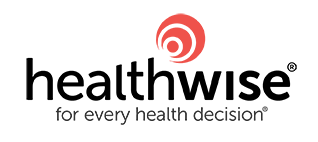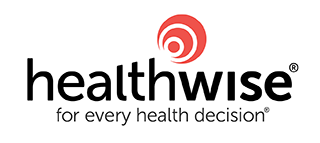Test Overview
Cholesterol and triglyceride tests are blood tests that measure lipids—fats and fatty substances used as a source of energy by your body. Lipids are found in your blood and are stored in tissues. They are an important part of cells, and they help keep your body working normally. Lipids include cholesterol, triglycerides, high-density lipoprotein (HDL), and low-density lipoprotein (LDL).
Cholesterol and triglyceride tests measure:
- Total cholesterol level.
- Triglyceride level.
- HDL cholesterol level. This is the "good" cholesterol.
- LDL cholesterol level. This is the "bad" cholesterol.
Other measurements that may be done include:
- Very-low-density lipoprotein (VLDL) cholesterol level.
- The ratio of total cholesterol to HDL.
- The ratio of LDL to HDL.
Your doctor may order these tests as part of a regular health examination. Your doctor may use the results to prevent, check on, or diagnose a medical condition. The results help your doctor check your risk of heart attack and stroke.
Follow your doctor's instructions on how to prepare for these tests. Your doctor may ask you to not eat or drink anything except water for 9 to 14 hours before your blood test. In most cases, you are allowed to take your medicines with water the morning of the test. Fasting is not always needed, but it may be recommended. Do not drink alcohol for 24 hours before the test.
Why It Is Done
Cholesterol and triglyceride testing is done:
- As part of a routine physical examination to screen for high cholesterol and high triglycerides.
- To check your response to medicine.
- To help find your risk of having heart and blood flow problems, including heart attack and stroke.
- If you have unusual symptoms, such as yellow fatty deposits in the skin (xanthomas). These symptoms may be caused by a genetic disease that causes very high cholesterol levels.
Cholesterol tests and heart attack risk
Your cholesterol levels can help your doctor find out your risk for having a heart attack or stroke.
But it's not just about your cholesterol. Your doctor uses your cholesterol levels plus other things to calculate your risk. These include:
- Your blood pressure.
- Whether or not you have diabetes.
- Your age, sex, and race.
- Whether or not you smoke.
Learn more
How To Prepare
- Your doctor may ask you to not eat or drink anything except water for 9 to 14 hours before the tests. In most cases, you can take your medicines with water the morning of the test.
- Do not drink alcohol for 24 hours before the tests.
- Tell your doctor ALL the medicines and natural health products you take. Some may increase the risk of problems during your test. Your doctor will tell you if you should stop taking any of them before the test and how soon to do it.
How It Is Done
A health professional uses a needle to take a blood sample, usually from the arm.
How It Feels
When a blood sample is taken, you may feel nothing at all from the needle. Or you might feel a quick sting or pinch.
Risks
There is very little chance of having a problem from this test. When a blood sample is taken, a small bruise may form at the site.
Results
Resultsfootnote 1, footnote 2 are usually available within 24 hours.
|
Total cholesterol |
Less than 5.2 millimoles per litre (mmol/L) |
|
HDL cholesterol |
1.6 mmol/L or higher |
|
LDL cholesterol |
Less than 2.6 mmol/L (less than 2.0 mmol/L for people at high risk for a heart attack) |
|
Triglycerides |
Less than 1.7 mmol/L |
If your LDL cholesterol is 4.5 mmol/L or more, it might mean that you have a familial lipid disorder.footnote 3
For children and teens, test results are slightly different than for adults.
Related Information
References
Citations
- Grundy S, et al. (2002). Third Report of the National Cholesterol Education Program (NCEP) Expert Panel on Detection, Evaluation, and Treatment of High Blood Cholesterol in Adults (Adult Treatment Panel III) (NIH Publication No. 02–5215). Bethesda, MD: National Institutes of Health. Also available online: http://www.nhlbi.nih.gov/guidelines/cholesterol/atp3full.pdf.
- Grundy SM, et al. (2004). Implications of recent clinical trials of the National Cholesterol Education Program Adult Treatment Panel III Guidelines. Circulation, 110(2): 227–239. [Erratum in Circulation, 110(6): 763.]
- Brunham LR, et al. (2018). Canadian Cardiovascular Society position statement on familial hypercholesterolemia: Update 2018. Canadian Journal of Cardiology, 34(12): 1553–1563. DOI: 10.1016/j.cjca.2018.09.005. Accessed December 10, 2018.
Credits
Current as of: September 7, 2022
Author: Healthwise Staff
Medical Review:
E. Gregory Thompson MD - Internal Medicine
Kathleen Romito MD - Family Medicine
Martin J. Gabica MD - Family Medicine
Elizabeth T. Russo MD - Internal Medicine
Adam Husney MD - Family Medicine
Current as of: September 7, 2022
Author: Healthwise Staff
Medical Review:E. Gregory Thompson MD - Internal Medicine & Kathleen Romito MD - Family Medicine & Martin J. Gabica MD - Family Medicine & Elizabeth T. Russo MD - Internal Medicine & Adam Husney MD - Family Medicine

